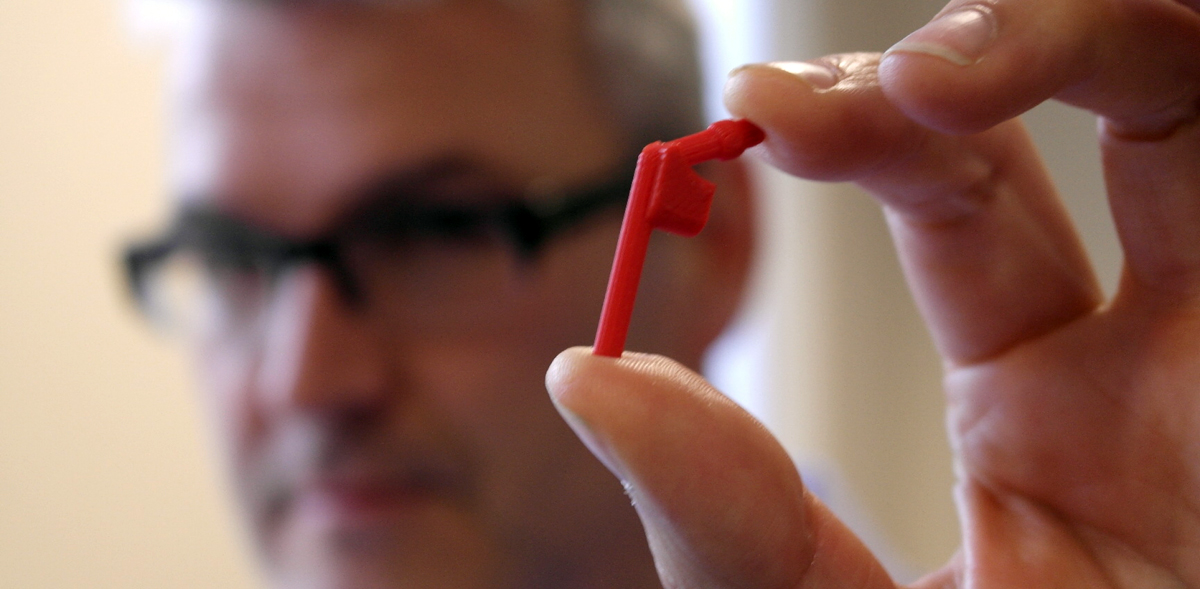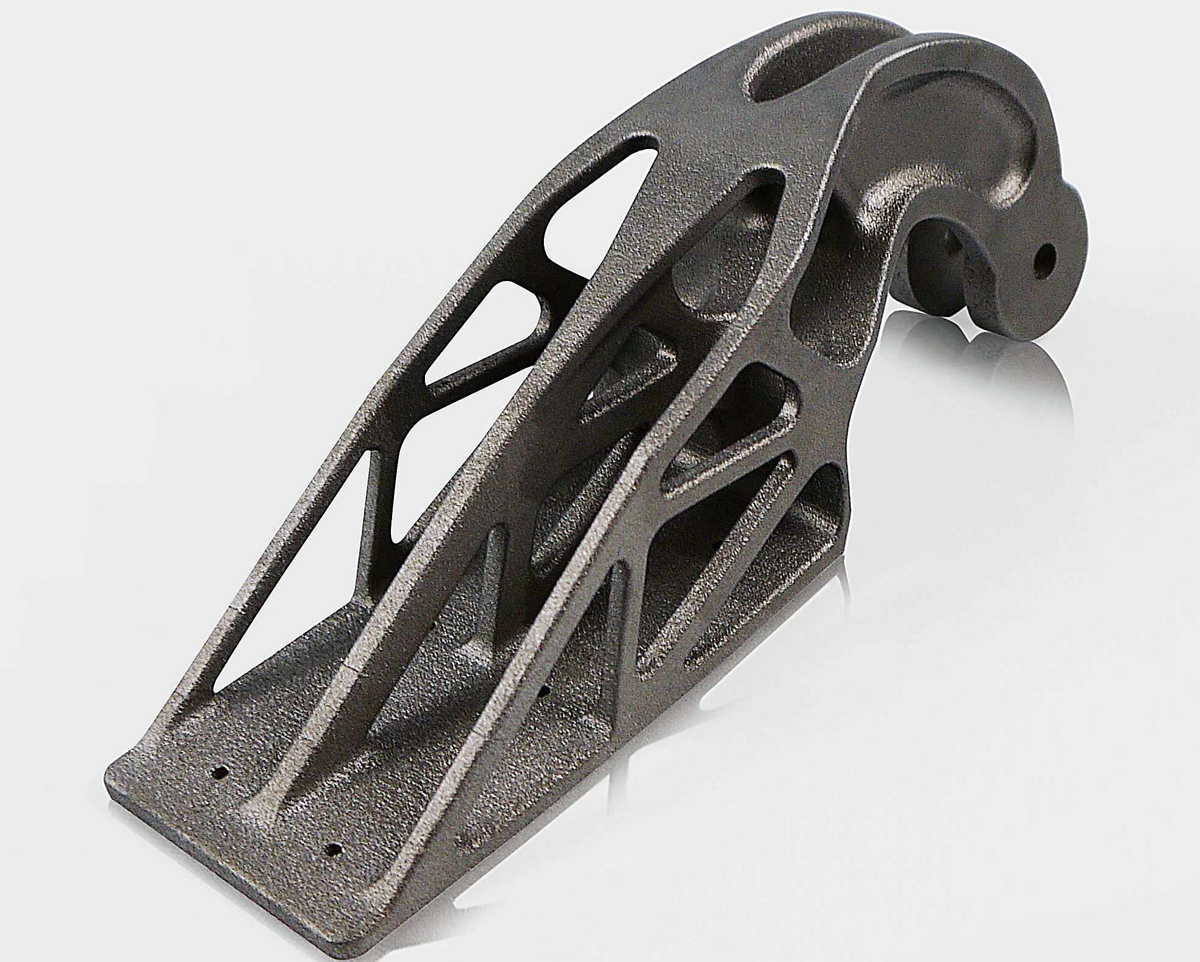Additive manufacturing (AM), or 3D printing, has gone a long way from the early stages of its deployment, 30 years ago. The most largely widespread 3D printing process for industrial applications builds parts layerwise on a powder-bed, selectively melting powder particles by means of a laser or an electron beam.
3D printing challenges the traditional dilemma between scale and scope that prevails in manufacturing in two ways. First, it reduces the capital required to achieve economies of scale. A single printer can simultaneously build several complex parts with variable designs. Therefore, large centralized factories with assembly lines are no longer required (barriers to entry for manufacturing in a given location are lowered).
Second, it increases the variety of designs that an amount of capital produces. Hence, complexity, production changeovers, and customization are cheaper.
In contrast to mass-production industries, the aerospace industry is largely focused on complex and low-volume production. As an early adopter of the latest technology strides, this industry is a major market for 3D printing and eyes the technique as a way to overcome its main challenges (environmental performance restrictions, high manufacturing costs, competitive market conditions).
How Can the Aerospace Industry Benefit from AM?
- Improved development cycles
3D printing enables engineers to prototype and validate conceptual design faster. Since tooling production can be skipped to go straight to finished parts, it speeds up the overall development process. The ability to prototype without tooling enables companies to quickly test multiple configurations in order to determine customer preferences and reduce product-launch risk and time to market.
Likewise, AM is advantageous for demonstration units and short-volume production where it brings down or eliminates the cost for expensive and poorly amortized manufacturing tooling.
3D-printing goes well along with crowd-sourcing ideas through remote cooperation, which, over time, will likely affect how companies manage R&D. That crowd-sourced brainpower might someday supplant traditional R&D, making its management a new priority.
In 2013, DARPA requested proposals to improve the design of vertical take-off and landing aircraft systems. Boeing additively manufactured a prototype in less than 30 days. The construction would have otherwise taken several months.
- Complex-design parts
Design strongly depends on which manufacturing techniques are employed. Engineers traditionally design anything by considering the possibilities and limitations of milling, turning, casting, forging and welding. Traditionally, some designs optimized for topology are not producible due to their complex shapes.
AM can fabricate complex components out of a variety of plastics and metals, such as steel, aluminum. Aerospace already benefits from 3D printed Titanium Ti6Al4V and Inconel 718, which offers superior flexibility in terms of feasible geometries and creates more space to innovate and explore new designs. It also allows designers to better serve maximum performance without the need to accommodate manufacturing limitations.
GE Aviation is using AM to create fan blade edges with complex shapes to optimize airflow; it is difficult and time-consuming to machine such blades through traditional manufacturing. By 2016, GE plans to additively manufacture these blade edges in large production runs.
- Consolidation of design
As a consequence of the high design complexity possible, AM offers the ability to consolidate multiple parts into fewer components, directly reducing the assembly time and costs. Moreover, it simplifies eventual design modifications.
In theory, consolidating a design reduces the need for joining several parts together by welding or any other method that potentially impairs reliability and durability.
GE additively manufactured single part fuel nozzles, which were formerly composed of 20 different parts. Used in GE’s LEAP engines, these nozzles are five times more durable than those produced with conventional methods.
- Spares manufacturing
Spare inventory is maintained to repair grounded aircrafts. Inventory are certainly relevant for low-volume and complex parts, out-of-production aircrafts spares or those required at remote locations, but it is reported that many spares remain unused or become obsolete.
Circumventing the need to keep and replace old tooling is a new industrial revolution and a cost advantage for manufacturers. 3D printing reduces warehousing and obsolescence costs by allowing on-demand and, sooner or later, on-site manufacturing.
Agile manufacturing also significantly reduces costs for space vehicles and space stations. Producing the necessary spares and tools directly in the station eliminates the need to send a rocket to space to deliver them, as well as the delays and costs associated.
BAE Systems received approval from the European Aviation Safety Agency (EASA) for its additively manufactured window breather pipes used in regional jetliners. 60% cheaper than pipes made through injection molding, AM pipes are printed then shipped to customers when required.
- Weight reduction
Weight is a key driver for airlines because lighter aircraft have double the impact on the industry. Lighter weight leads to lower fuel consumption (and CO2 emissions) and to the competitive advantage of reduced costs and better airfares.
Space vehicles also require intricately designed parts to minimize packaging space and reduce weight. Such parts are typically produced in very small volumes and if traditionally manufactured they are expensive and time-consuming.
ALM undoubtedly helps reduce the weight of aerospace components by printing more efficient geometries, topologically optimized and lattice structures that carve out significant amounts of unnecessary material.
EADS used DMLS 3D printing to build an optimized design of Airbus A320 nacelle hinge brackets. They lightened the part by 35-55%, while maintaining its strength and performance. This will save 10 kg off the entire aircraft weight.
Removing only 1 kg from each aircraft of a 600+ fleet of commercial aircrafts could save about 90,000 liters of fuel annually, cutting down on fuel bills (in 2013, fuel typically absorbed 35% of an airline’s annual revenues). It also avoids the emission of 230 tons of CO2 into the atmosphere, a significant environmental gain.
- Material efficiency
Some aerospace parts are made of expensive materials such as titanium Ti6Al4V or super-alloy Inconel 718. Such raw materials are traditionally hard to shape when long machining is required. Depending on the geometry, production can involve a high amount of material waste, resulting in a costly loss and the need to undertake recycling operations.
While raw powdermaterials for metal 3D printing are expensive, the process of 3D printing creates far less material waste.
The buy-to-fly ratio of Lockheed Martin’s bleed air leak detector (BALD) brackets was reduced from 33:1 to about 1:1 by using electron beam melting (EBM). Even though the titanium alloy used in the AM process costs more than the wrought one traditionally processed, the cost of each bracket was cut down by 50% without compromising mechanical properties.
- In-process quality assurance
The aerospace industry is obsessed with performance and reliability. A promising development in metal AM production systems concerns the real-time and closed-loop, in-process quality control.
Quality assurance is traditionally performed downstream from manufacturing and is vital for serial production. For certain components, quality assurance can represent a significant part of the overall lead time. Moreover, there is a real challenge in defining the new quality control procedures applicable to AM. Inspecting and testing complex shapes is difficult, even more when multiple parts are printed together, assembled and undismantable.
Monitoring the system settings and process parameters during the ongoing manufacturing allows regulating them to ensure that conditions are optimal. Mechanical properties in additive manufacturing are all about metallurgy and repeatable high quality parts with high material quality and mechanical properties are essential for aerospace industry.
Furthermore, in-process quality assurance reduces the quality inspection costs of components produced by ALM, which ultimately serves to reduce unit costs.
In GE’s Aviation, post-build inspection procedures may account for as much as 25% of the time required to produce an additively manufactured jet engine component. Conducting inspection procedures while the component is being built will expedite production rates.
Outlook
The aerospace sector is, for now, the largest source of demand for AM production-grade systems. Aerospace leaders recognize the unique advantages of 3D printing and are seeking ways to exploit them. This technology is a natural fit for aerospace, even though it still has some way to go before it plays a mature strategic role for rapid aerospace manufacturing. Indeed, some challenges are yet to be overcome, mainly associated with accuracy, build platform capacity, high material costs, low range of materials, and limited multi-material printing capabilities.






